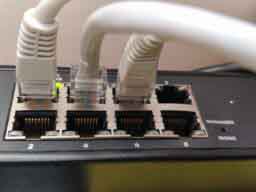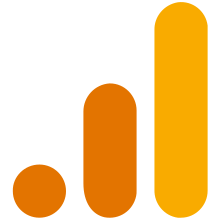Okay, so first lets break down the title of this post. IPv4 and IPv6 are mentioned. “IP” in this case stands for Internet Protocol. In computing terms, if you see an IP written it refers to an address, so many times people will say “IP Address”. When you browse the internet on your phone or your home laptop, or office computers, somewhere along the way an IP address is being used.
Most people in Ireland can go onto the internet daily, having some device – a phone, laptop, desktop computer, their television or even the fridge that can show video, check mail and browse webpages. Every time that someone goes online, their device has a 2 way conversation with the service they are talking to.
Lets say I am at home and I want to look at something on Netflix on my television . My television will contact Netflix using the Netflix IP address. Netflix then will need to know where in the world our television is – exactly. Netflix uses our IP address to send us the video. Every internet capable device needs to have an IP address. In very simple terms IP addresses are used for devices on the internet to find each other so that they can talk to each other.
IP addresses come in two forms as far as this conversation is concerned. Internet Protocol version 4 (IPv4) and Internet Protocol version 6 (IPv6). IPv4 look like 125.45.124.13 or numbers dot numbers dot numbers dot numbers. Using these numbers and dots Netflix can find you. Some of Netflix’s IPv4 address are
- 52.0.131.132
- 3.221.228.214
- 18.207.84.236
Netflix is the company but the company has many computers (servers) that can be contacted around the world. Usually, our brains are not wired to handle numbers like those above. Imagine you are going to look at Netflix and you sit down with your nice hot chocolate and you being punching in 52.0.131.132. No it is easier to write “netflix.com” in your browser and the browser will find Netflix for you. But the computer does not understand the words “Netflix.com”. The computer DOES know however to look for another computer that says “netflix.com = 52.0.131.132”. So Netflix appears on your screen.
Note that every website has this going on. Facebook, Microsoft, Google every single one has one or more IP addresses in the form of numbers (or numbers and letters). Computers take a domain name like webglic.com and translates this address into these numbers. And that is an IP address version 4.
So what is this IPv6 then? Well, when Internet Protocol version 4 was devised no one really knew that the internet would be EVERYWHERE the way it is today. No one could have predicted the “Internet Of Things” were every day devices are connected to the internet. So IPv6 was devised to handle all the many more devices that need to be able to contact the internet. To put this into context for you. IPv4 can handle around 4.3 billion addresses. After this number IPv4 has run out of numbers. There are various reasons for this but rest assured that generally it can handle around 4.3 billion addresses. IPv6 on the other hand can handle around 340 trillion, trillion, trillion addresses. That is because an IPv6 address is longer (look like this 2001:db8:0:1234:0:567:8:1).
So at least I cannot see us running out of IPv6 addresses any time soon. Then again, that is what they said back in the early 80’s!





